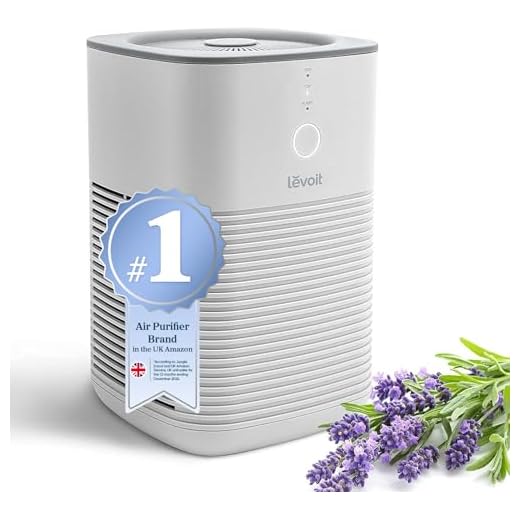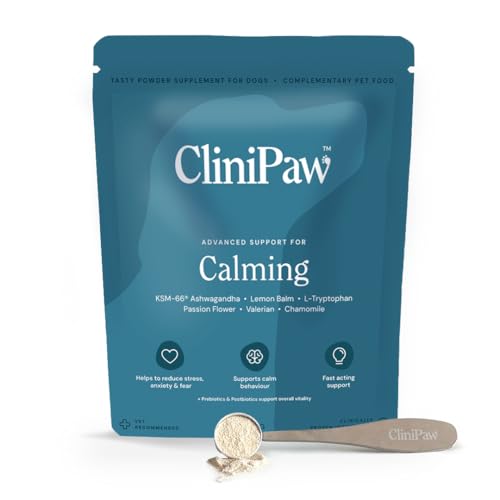




Lavender and chamomile stand out as excellent options for creating a pleasant atmosphere without harming our furry companions. These two scents are not only calming but also have been shown to help reduce anxiety in pets. A few drops in your diffuser can promote relaxation during stressful times, such as thunderstorms or fireworks.
Another great choice is sweet orange, which offers a refreshing and uplifting aroma. This citrus scent can enhance mood and invigorate your space while being gentle enough for both pets. Just ensure you use it in moderation, as stronger concentrations may cause discomfort.
Always remember to monitor your pets for any unusual behaviour after introducing new scents. While lavender, chamomile, and sweet orange are generally well-tolerated, individual reactions can vary. If your pet shows signs of distress, it’s best to discontinue use immediately.
Lastly, consider using scents from reputable sources, as not all products are created equal. Look for those that specify they are suitable for homes with animals, ensuring you provide a safe and pleasant environment for your beloved companions.
Recommended Aromatics for Your Furry Friends
Lavender stands out as a gentle option to create a calming atmosphere. It can help reduce stress and anxiety in animals, making it a popular choice for pet owners. Just ensure it’s used in moderation, as even mild scents can be overwhelming in concentrated forms.
Frankincense is another aromatic that can be beneficial. Known for its soothing properties, it can promote relaxation in pets. Diffusing a small amount in a well-ventilated area can support your furry companion’s well-being.
Chamomile is often praised for its calming effects. When diffused lightly, it may help alleviate restlessness in pets. Just like with other scents, monitor how your pet reacts to ensure comfort.
Myrrh is less common but offers potential benefits. It can be used to support a tranquil environment, especially during stressful situations like thunderstorms or fireworks. A few drops in a diffuser can help maintain a peaceful space.
Peppermint can invigorate and refresh a room, but caution is advised. While it can be uplifting, some pets might find it too intense. Always observe your pet’s reaction and adjust accordingly.
Geranium can also be a pleasant addition. It has been noted for its potential to repel insects, which is a bonus during warmer months. Just like other aromas, moderation is key.
Always keep in mind that each pet is unique. Observing their behaviour and ensuring proper ventilation can help create a positive environment. If any signs of discomfort arise, discontinue use immediately. Your pet’s comfort should always come first.
Understanding the Risks of Essential Oils for Pets
Many pet owners may not realise that certain substances can pose serious health risks to their furry companions. A significant number of plant extracts, despite their popularity in aromatherapy, can be harmful to animals. For instance, tea tree and peppermint extracts can lead to gastrointestinal upset, lethargy, or even more severe health issues if ingested or absorbed through the skin.
Symptoms of toxicity can vary. If a pet is exposed to harmful extracts, they might display signs such as drooling, vomiting, or difficulty breathing. It’s crucial to monitor your animal closely following any exposure. If symptoms occur, seeking immediate veterinary assistance is necessary.
Pet owners should also consider individual sensitivities. Some pets may react differently to certain substances. What is tolerable for one may not be for another. Conducting thorough research on each extract and consulting with a veterinarian can help mitigate risks.
Using a diffuser in a space with pets requires caution. Ensure the area is well-ventilated and that your pets have the choice to leave the room. Creating a safe environment is essential for their wellbeing. If you’re ever in doubt, it’s wise to err on the side of caution and avoid using any potentially harmful substances around your beloved companions.
Staying informed about pet-safe practices can prevent unnecessary health risks. Regularly updating your knowledge on which extracts are safe can contribute to a happier, healthier life for your pet.
Top Safe Essential Oils for Dogs
Lavender is a fantastic choice for keeping your furry friend calm. I often diffuse it in the evenings when my dog seems a bit restless. The soothing aroma helps him wind down after a long day of play.
Chamomile is another great option. It not only promotes relaxation but can also aid in alleviating minor skin irritations. When I use chamomile around my home, I notice that my pooch enjoys a more peaceful atmosphere.
Frankincense offers numerous benefits, including anti-inflammatory properties. I’ve found it useful when my dog has had a few scrapes or minor cuts. Just a drop diluted in a carrier can assist in healing.
Peppermint can help with nausea and is refreshing for the air. I’ve noticed that my dog occasionally experiences car sickness, and a hint of this scent can make our trips much more pleasant.
Geranium is effective for repelling insects, which is a bonus in the warmer months. I often use it in combination with other scents to create a pleasant environment while keeping pesky bugs at bay.
When using these scents, always ensure they are diluted properly and introduce them gradually to your pet’s surroundings. Check for any adverse reactions, and consult with your vet if you’re unsure about a particular choice. For overall well-being, consider pairing these scents with the best dry dog foods for dry itchy skin to keep your dog healthy and happy.
Top Safe Essential Oils for Cats
Lavender remains a popular choice among pet owners. Its calming properties can help reduce anxiety in felines. A few drops in a diffuser can create a soothing atmosphere for both you and your furry companion.
Chamomile is another excellent option. It may aid in relaxation and can assist with digestive issues. A diluted form, when applied in a well-ventilated area, can provide comfort without posing risks.
Frankincense offers anti-inflammatory benefits and may help improve overall wellness. Using it sparingly in a space where your cat spends time can promote a sense of tranquillity.
Rosemary can be beneficial as well. It serves as a natural insect repellent while also supporting cognitive function. Ensure to use it in moderation, as strong scents can overwhelm sensitive noses.
Geranium is ideal for promoting emotional balance. It may help alleviate stress and tension, making it a good choice for multi-pet households.
Always ensure adequate ventilation when using any scent around your feline friend. Monitor their behaviour closely, as individual reactions can vary. If any signs of discomfort arise, it’s best to discontinue use immediately.
How to Properly Use Diffuser Oils Around Pets
Always ensure your furry friends have a well-ventilated space. Open windows or use fans to circulate air, reducing the concentration of aromas. This simple trick can prevent any potential discomfort for your pets.
Consider the placement of your aroma device. Keep it out of reach of your pets and away from their resting spots. This creates a buffer zone, allowing them to choose whether or not they want to be near the scents.
Start with a very small amount of fragrance. Use just a few drops to gauge your pet’s reaction. If they show signs of distress, discontinue use immediately. It’s better to err on the side of caution.
Monitor your companions closely during initial exposure. Watch for signs of discomfort, such as excessive sneezing, coughing, or changes in behaviour. If anything seems off, stop immediately and consult a vet if necessary.
Consider duration as well. Limit the time the device is running, especially in the beginning. A few hours may be enough to enjoy the aroma without overwhelming your animal pals.
Use only those aromas that have been confirmed as safe. Research thoroughly or consult with a veterinarian to ensure you’re making informed choices. Not every scent is suitable, so diligence is key.
It’s wise to avoid using these fragrances in areas where your pets spend most of their time, such as their beds or favourite lounging spots. Keeping it to shared spaces can help minimise any risks.
Lastly, always keep your pet’s health in mind. If they have any pre-existing conditions or sensitivities, consult your vet before introducing any new scents into your home. Their safety should always come first.
Signs of Essential Oil Toxicity in Pets
Recognising the signs of toxicity in furry companions is crucial for their well-being. If you suspect your pet has been exposed to harmful substances, look for the following symptoms:
- Vomiting: Frequent or sudden vomiting can indicate distress.
- Diarrhoea: Loose stools may arise from gastrointestinal irritation.
- Excessive drooling: An increase in saliva production can signal discomfort.
- Difficulty breathing: Laboured or rapid breathing requires immediate attention.
- Lethargy: Unusual tiredness or lack of energy is a red flag.
- Tremors or seizures: Neurological symptoms can indicate severe toxicity.
- Skin irritation: Redness, itching, or rashes on the skin may occur after contact.
- Changes in behaviour: Unusual aggression, confusion, or hiding are signs of distress.
If any of these symptoms appear, seek veterinary assistance immediately. Quick intervention can make a significant difference in your pet’s recovery.
Being aware of these indicators allows you to act swiftly and safeguard your companions from potential harm.
Alternative Aromatherapy Options for Pet Owners
If you’re looking for ways to create a calming atmosphere without using plant extracts that could harm your furry friends, consider options like herbal sachets and hydrosols. I’ve found that these alternatives can provide a pleasant aroma while being much safer for pets.
Herbal Sachets
Creating herbal sachets is simple and effective. Fill small cloth bags with dried herbs such as chamomile, lavender, or peppermint. I keep a sachet of chamomile near my dog’s bed. It not only smells lovely but also helps to soothe his anxiety during thunderstorms. Just ensure the herbs you choose are pet-friendly.
Hydrosols
Hydrosols, or flower waters, are another excellent choice. They are less concentrated than their more potent counterparts and can be used in a spray bottle to lightly mist areas around your home. I’ve had great success using rose water to freshen up the living room. My pets seem to enjoy the scent without any adverse reactions.
| Alternative | Benefits | Pet Safety |
|---|---|---|
| Herbal Sachets | Soothing aroma, easy to make | Generally safe if using pet-friendly herbs |
| Hydrosols | Light scent, versatile use | Safe for most pets, but check individual reactions |
| Coconut Oil | Moisturizing, pleasant aroma | Generally safe in small amounts |
Using these alternatives has helped me create a more relaxed environment without worrying about my pets’ health. It’s a rewarding discovery that allows me to enjoy the benefits of aromatherapy while keeping my companions safe.





